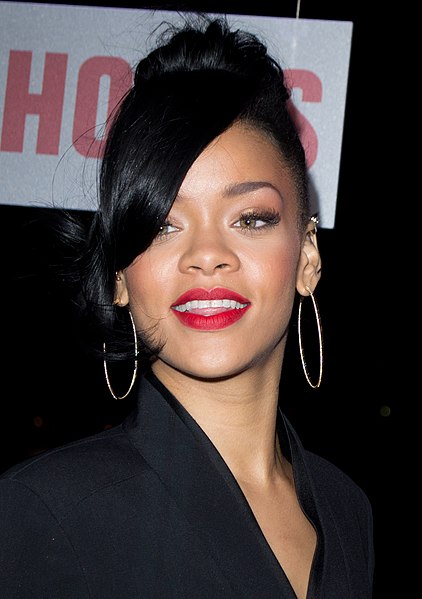The music video for "Hard" was directed by Melina Matsoukas and filmed in December 2009 in Los Angeles. It was the first Rihanna video directed by Matsoukas, who would go on to direct videos for "Rude Boy" and "Rockstar 101". Before the premier of the video, Rihanna told Kyle Anderson of MTV News: "It's couture-military. Everything is surrounded by the whole idea of something military. We have tanks, we have troops, we've got helicopters, we've got explosions. Tight gear, lots of cute outfits, lots of bullets. Crazy.
The video's first scene is set in a desert at night. Rihanna, wearing a garrison cap, sunglasses, and a stylized white top, stands in front of an army. This scene is inter-cut with scenes of Rihanna in a bunker; she wears an army hard hat, pink lace up boots, and a skin-coloured top with small black rectangles covering her breasts. Half way through the first verse, the scene changes to a daytime desert scene in which Rihanna wears a low cut, short black dress with spiked shoulder pads, and walks through the location as small explosions occur around her.
As the first chorus begins, earlier scenes from the video are inter-cut with each other; Rihanna is shown commanding her troops, firing a machine gun, and dancing in the bunker. As the second verse begins, Rihanna is seen with slicked-back hair wearing a metal bikini top, rolling in mud and surrounded by troops on a stone structure before a mountainous backdrop. She is shown gambling with (and winning against) soldiers in another bunker.The video's first scene is set in a desert at night. Rihanna, wearing a garrison cap, sunglasses, and a stylized white top, stands in front of an army. This scene is inter-cut with scenes of Rihanna in a bunker; she wears an army hard hat, pink lace up boots, and a skin-coloured top with small black rectangles covering her breasts. Half way through the first verse, the scene changes to a daytime desert scene in which Rihanna wears a low cut, short black dress with spiked shoulder pads, and walks through the location as small explosions occur around her.
As the second chorus starts, Rihanna, wearing a bullet bra and a helmet similar in appearance to the ears of Mickey Mouse, stands on a pink army tank. During Jeezy's rap verse, Jeezy is seen in the middle of a crosshair, and explosions occur around Rihanna. During the bridge and final chorus of the song, scenes of Rihanna from throughout the video are inter-cut with each other. In this sequence, Rihanna wears a high-waisted black bikini and waves a large black flag with a white "R" in the middle of it.





